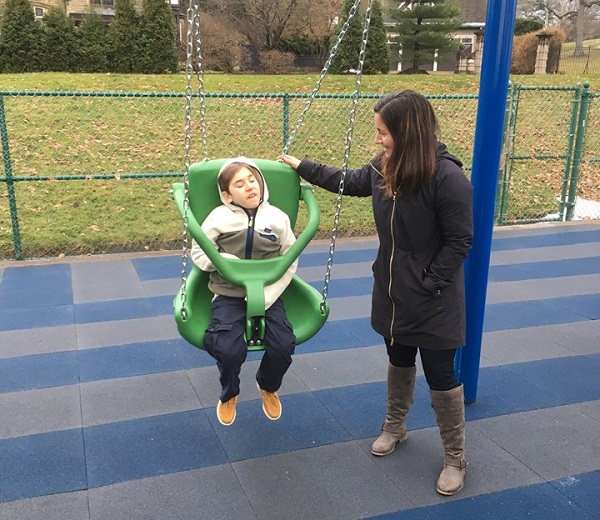
Parents asked and got it: Making Pittsburgh’s playgrounds fun for all
Mara Kaplan knows firsthand the importance of inclusive playgrounds.
As the mother of a child with a disability, she remembers the day her son outgrew the toddler swing in Highland Park.
“Once he got stuck in there, that was it,” she says. “We had to stop going because there was nothing else at the playground he could use.”
The city took its first step toward fixing that injustice when officials, including Mayor Bill Peduto and then-City Councilman Dan Gilman, unveiled a new strategic plan to improve the accessibility of Pittsburgh’s playgrounds.
“The expansion of handicap accessible equipment in our parks … eliminates barriers and provides children and families the opportunity to learn, grow and play together,” said Peduto at the press conference. His vision for the city includes an accessible park or playground within a 10-minute walk of every resident. “I look forward to creating more innovative and inclusive play environments throughout the city.”
The Department of Public Works installed 91 ADA-accessible swings and six wheelchair-accessible swings across 78 parks and playgrounds citywide, with plans for more on the way.
The initiative was inspired by Friendship residents Becky Mingo and Dutch MacDonald, whose two sons, Toby and Max, were diagnosed with Hunter Syndrome — a fatal degenerative disease — at a young age. The couple contacted Gilman about creating accessible playgrounds. Though Toby and Max have passed away, Becky says her sons would be “honored by designing our city playgrounds for everyone.”
The installation of accessible swings is a “first step toward ensuring that all of Pittsburgh’s world-class parks and playgrounds are inclusive and can be enjoyed by children of all abilities,” Gilman says.
Kaplan — who served as founding executive director of Pittsburgh’s Center for Creative Play from 1995 to 2007 and now runs Let Kids Play, a consulting service for inclusive and accessible playgrounds — agrees that it’s a good initial investment. But she says there’s much more the city can do.
“Of course, you need accessibility first,” she says, “because you can’t get to inclusion if kids don’t have access.”
That means ensuring the playground itself doesn’t keep kids out. Wood mulch surfaces, for example, can be a barrier to those in wheelchairs. Kaplan cites the need for fences so that parents can step back and allow their kids a degree of independence. Fences also can protect the “80 percent of children with autism who will run at one point in their lives,” she says. “When they’re running, they’re in fight or flight mode, and they can easily run into a street or a stream.”
Once accessibility is taken care of, she says, it’s time to focus on fun.
“You don’t want it to be boring,” Kaplan says. “You should have a whole range of challenges because you want typically developing children to be there as much as children with different abilities. You don’t want to make it just ramps and play panels because that’s no fun for anyone.”
Kaplan says a few inclusive playspaces in and around Pittsburgh have achieved this — including Casey’s Clubhouse and the playground at the Children’s institute— but says the best examples, like the Magical Bridge Playground in Palo Alto, Calif., are largely out west. She hopes the city will look to them as models while redesigning and maintaining its playspaces.
‘What Pittsburgh really needs is a policy,” she says. “Playground equipment tends to last 15 or 20 years, so we need a policy that says, ‘As we go through and replace things, we’ll strive to do X or Y.’ That way, as the city replaces equipment, its playspaces become gradually more inclusive. We’re way beyond ramped playgrounds now. It’s amazing what’s out there for kids.”